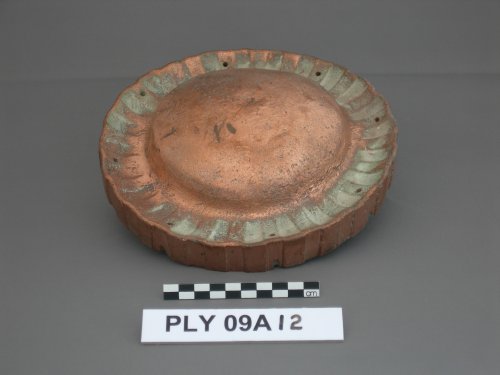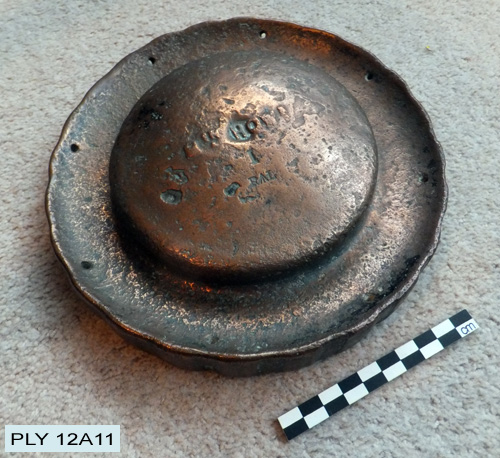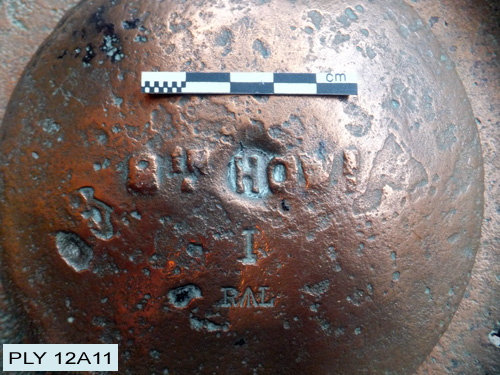Gas Check (09A12, 12A11)
The 8-inch copper gas check 09A12 was recovered from the seabed just to the north of the Shagstone in Plymouth Sound. The 7-inch gas check 12A11 was recovered from Tinker Shoal.
A gas check is flat plate of metal used to impart spin to a projectile in a rifled gun and to seal the bore. It is placed behind the projectile on loading the gun and falls away when the projectile leaves the muzzle. The idea emanated from the Elswick firm and was a means for overcoming erosion caused by windage, the gas escaping around the shell as it is fired. The first gas checks were a cup of papier-mâché but these were replaced in 1878 by ones constructed of copper with 3% zinc so they would not break up in flight. A later adaptation was to fix the gas check to the projectile. Because the gas check made the shell rotate, studs were no longer required to be fitted to each shell making manufacture easier and cheaper. This was the precursor of the copper driving band on modern breech loading shells. The earlier gas checks were smooth and the action of firing expanded them into the grooves of the rifling. When slow burning powders were introduced this occurred more gradually and gas checks with ribs to fit the grooves were produced.
The gas check for the 8-inch Howitzer was suitable for common and shrapnel shells, the curved portion of the base of the shell being cast with radial grooves into which the inner surface of the gas check is compressed by the pressure on firing; the gas check is also at the same time firmly attached to the base of the shell by being compressed into the groove or neck round the locking rim at the rear end of the shell. It is made with projections round the circumference corresponding with the rifling grooves of the howitzer (1).
![]() If you have any more information about these finds then please contact us.
If you have any more information about these finds then please contact us.
Images
 |
 |
Inscription on 12A11 |
References
(1) Victorian Forts and Artillery - Gas Checks, http://www.victorianforts.co.uk/art/check.htm, accessed June 2012
(2) Pye A. & Woodward F., 1996, The Historic Defences of Plymouth, Exeter Archaeology, ISBN 1 898166 46 3
(3) Woodward F., 1997, Forts or Follies? - A History of Plymouth's Palmerston Forts, Halsgrove, ISBN 1 874448 12 4

